Graphical Waterfalls® are hi-tech waterfalls which use the formation of water droplets to convey graphical forms, logos and words with remarkable clarity. Our company is the originator of this technology and the only company to build our own valves to make the water graphics.
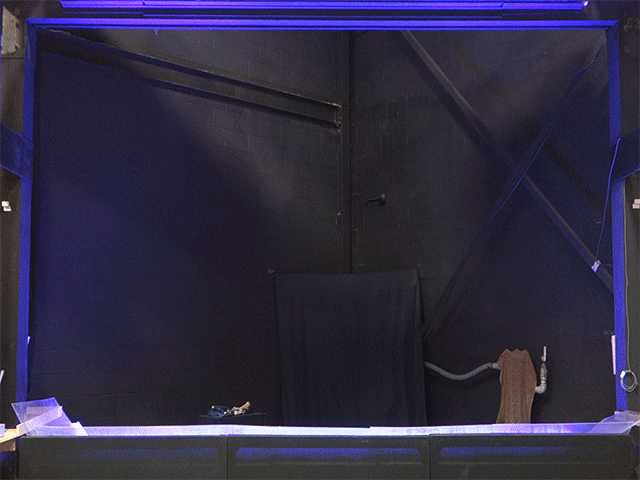
The water droplets are produced inside modular units: each standard module is 4 feet wide x 9 inches front to back x 31 inches high. Inside each module there are 2 separate compartments, the upper compartment houses the electronics which are connected to both an internal and external computer and the lower compartment houses the solenoid valves where the water droplets are formed. Patterns are created by the presence and absence of water, like a dot-matrix printer. The open valves allow water to fall, and these are the droplets which create the image. The valves which are closed keep the water from falling in those spaces. After the water droplets fall into the tank below, they are pumped back up into the water compartment, falling again through the open valves. Because we build our own valves, our waterfalls can produce very thick images; each pixel of water is composed of nine water droplets, three wide by three deep. In addition, our standard modules consist of 2 layers of pixels, so Pevnick Design has created signature designs of overlapping ribbons, chasing ribbons and other overlapping geometric patterns in water. The falling water shapes are illuminated by LED lights to sparkle and captivate.
Graphical Waterfalls® are created as modular systems to allow for a great degree of flexibility. Our standard modules are 4 feet wide, so a waterfall may be constructed in any multiple of 4 feet.
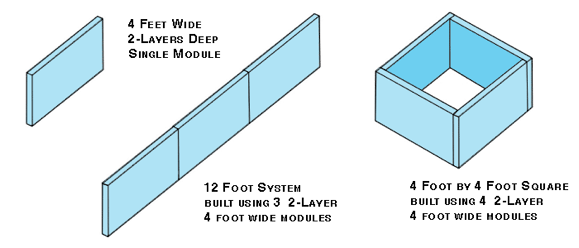
Modules can be arranged in straight lines, gentle curves, the perimeter of a square or a circle or any other configuration you might like. Since all Graphical Waterfall® modules are connected by ethernet data connections, separate sets of modules can remain graphically synchronized at all times.
Our standard modules are configured with two layers of pixels; each layer of pixels is independently programmable which allows for the creation of overlapping graphics and designs.
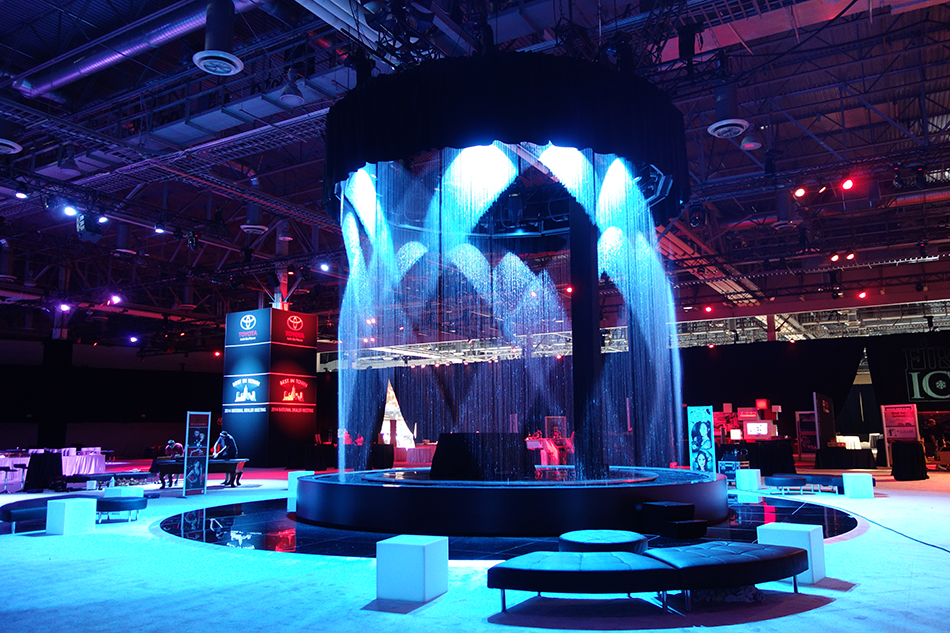
For permanent installation, we could build 4 layer or 8 layer modules as an alternative to our standard 2 layer modules. These thicker systems are ideal for large and/or outdoor displays as they offer the greatest depth of image and give a real sense of 3D space. 8-layer modules are available in 1 ft. wide increments and 4-layer modules are available in 2 ft. wide increments. The sizes of those modules would be as indicated below:
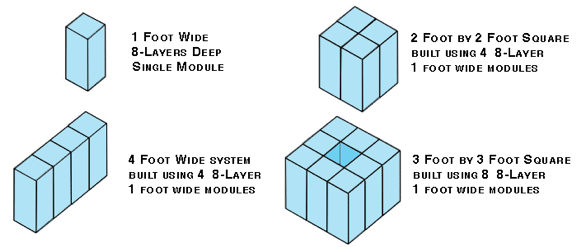
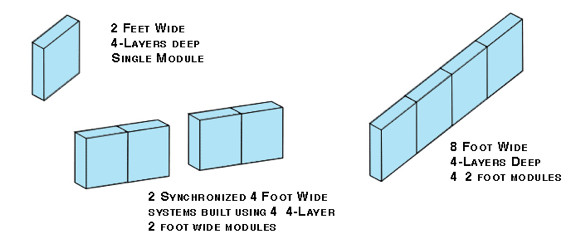
We recommend having at least 6 vertical feet of open space to view the falling graphical images. For a trade show, this will require a minimum ceiling height of 12 feet. The higher the modules are off the ground, the longer the images will linger in the air and the slower they will appear to fall. Images falling from 50 feet off the ground are spectacular!
See just some of the possible configurations of Graphical Waterfall® modules in this downloadable document .
Have your own idea for a configuration? Tell us your idea and we will do our best to make the ideal Graphical Waterfall® for your project!
The following drawing illustrates some of the options for controlling the waterfall and synchronizing the display with lights, music, video and other systems.
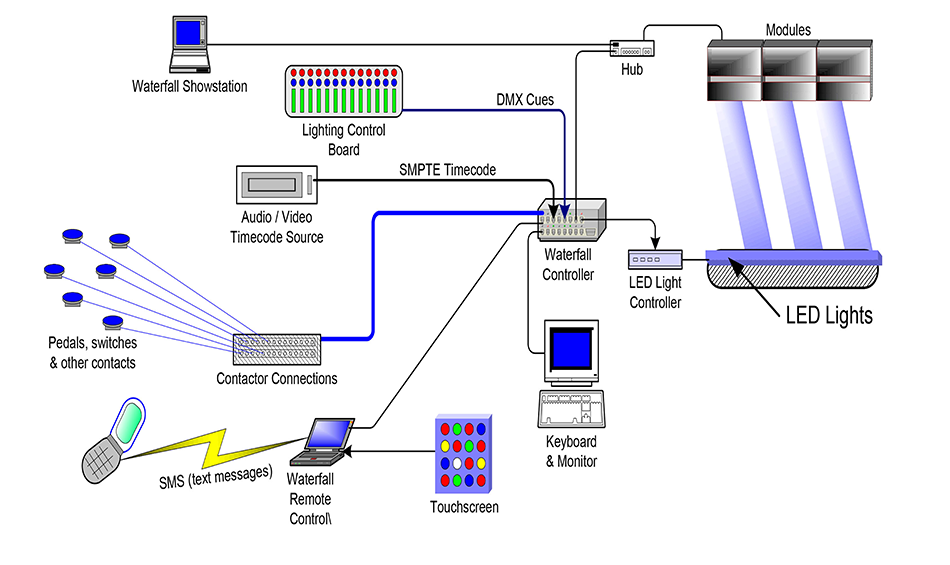
Industry standard SMPTE time codes and commercial lighting boards can be used to control and synchronize the Waterfall display with audio, video or lighting effects. As an option, the Waterfall Controller is also capable of controlling an LED light array directly.
Messages and commands can be sent remotely to the Waterfall Controller over a serial link or across the network. These flexible control options provide industry standard interfacing plus exciting possibilities for public interaction.